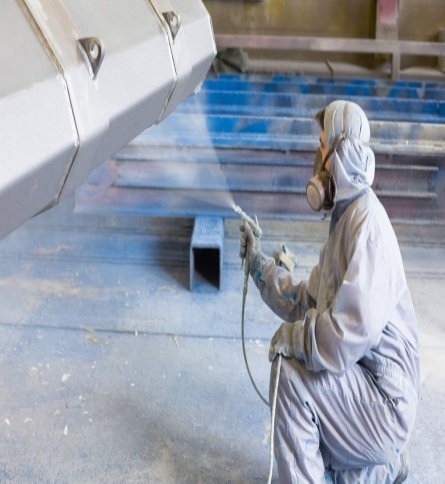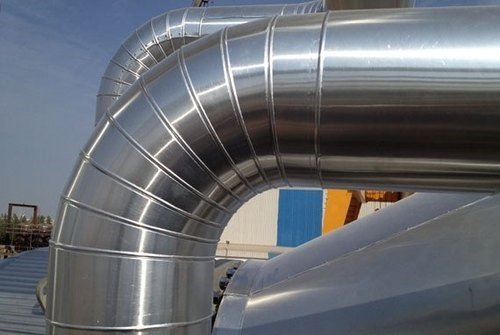Sand blasting, painting
Sand Blasting in Civil Construction
Sand blasting is a process used in civil construction to clean, smooth, or shape a surface using high-pressure air and sand particles. It is commonly used to remove rust, paint, or other coatings from metal surfaces, as well as to prepare surfaces for painting or coating.
The process involves propelling fine sand particles at high velocity onto the surface being treated, using compressed air or a centrifugal wheel. This abrasion action effectively removes unwanted materials from the surface, leaving it clean and ready for further treatment.
Sand blasting is often used in the preparation of steel structures and components for construction projects, as it can effectively remove rust and corrosion, providing a clean surface for welding or painting. It is also used in the maintenance and restoration of concrete surfaces, such as bridges or buildings, to remove old coatings or contaminants.
Safety measures are crucial when performing sand blasting, as the process creates airborne particles that can be hazardous if inhaled. Protective equipment such as respirators, goggles, and protective clothing are necessary to prevent exposure to the abrasive materials and dust.
In conclusion, sand blasting is an important process in civil construction for preparing surfaces and maintaining structural components.
Sand Blasting, Painting, and Coating Services
In addition to its use in civil construction, sand blasting is also commonly used in the painting and coating industry. The process is often used to prepare surfaces for painting or coating by removing old paint, rust, or other contaminants.
Sand blasting can effectively clean and roughen surfaces, providing a better bonding surface for paint or coating materials. This ensures that the paint or coating adheres properly and lasts longer, resulting in a more durable and high-quality finish.
In addition to surface preparation, sand blasting can also be used to apply coatings directly onto surfaces. This method, known as abrasive blasting, involves using specialized equipment to propel coating materials at high velocity onto the surface being treated. This process can be used to apply protective coatings, such as epoxy or polyurethane, to surfaces that require corrosion protection or chemical resistance.
Overall, sand blasting plays a crucial role in the painting and coating industry by ensuring proper surface preparation and application of protective coatings.

Fire proofing
Architects can make a difference today,
INCC is considered one of the very few market leaders as approved
intumescent and cementitious fireproofing applicators as our fame
extends to the worldwide fireproofing material manufacturers.
Unfortunately, fires are not at all unusual events
in high-risk installations such as factories, petrochemical and chemical plants. Protecting a building from fire
is serious business.
Our mission is to save lives, property, and money.
We help communities and businesses to become safer places
to live and work in, by reducing their risk of fire damage, saving
money, and helping the environment by reducing energy consumption.

Thermal insulation
Material or combination of materials used to reduce the transfer of heat between objects or areas. It is commonly used in buildings, industrial equipment, and vehicles to improve energy efficiency and maintain comfortable temperatures. Thermal insulation works by trapping air or other gases in small pockets within the material, which reduces the transfer of heat through conduction, convection, and radiation.
There are many different types of thermal insulation materials, including fiberglass, foam board, cellulose, and spray foam. These materials can be installed in walls, ceilings, floors, and around pipes and ductwork to reduce heat loss or gain. Proper installation of thermal insulation is important to ensure maximum effectiveness and energy savings.
In addition to reducing energy costs, thermal insulation can also improve indoor comfort, reduce noise transmission, and prevent condensation and moisture buildup. It is an important component of building design and construction, as well as in industrial applications where temperature control is critical.

